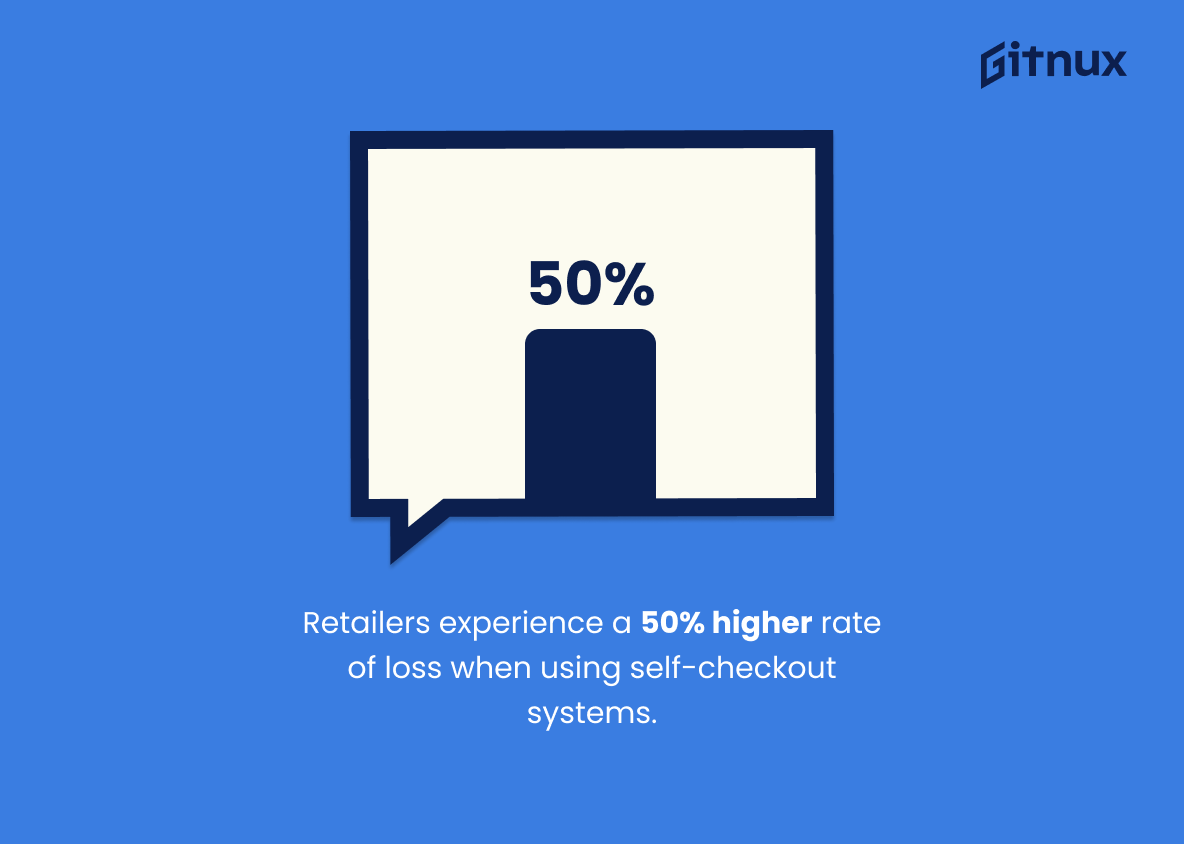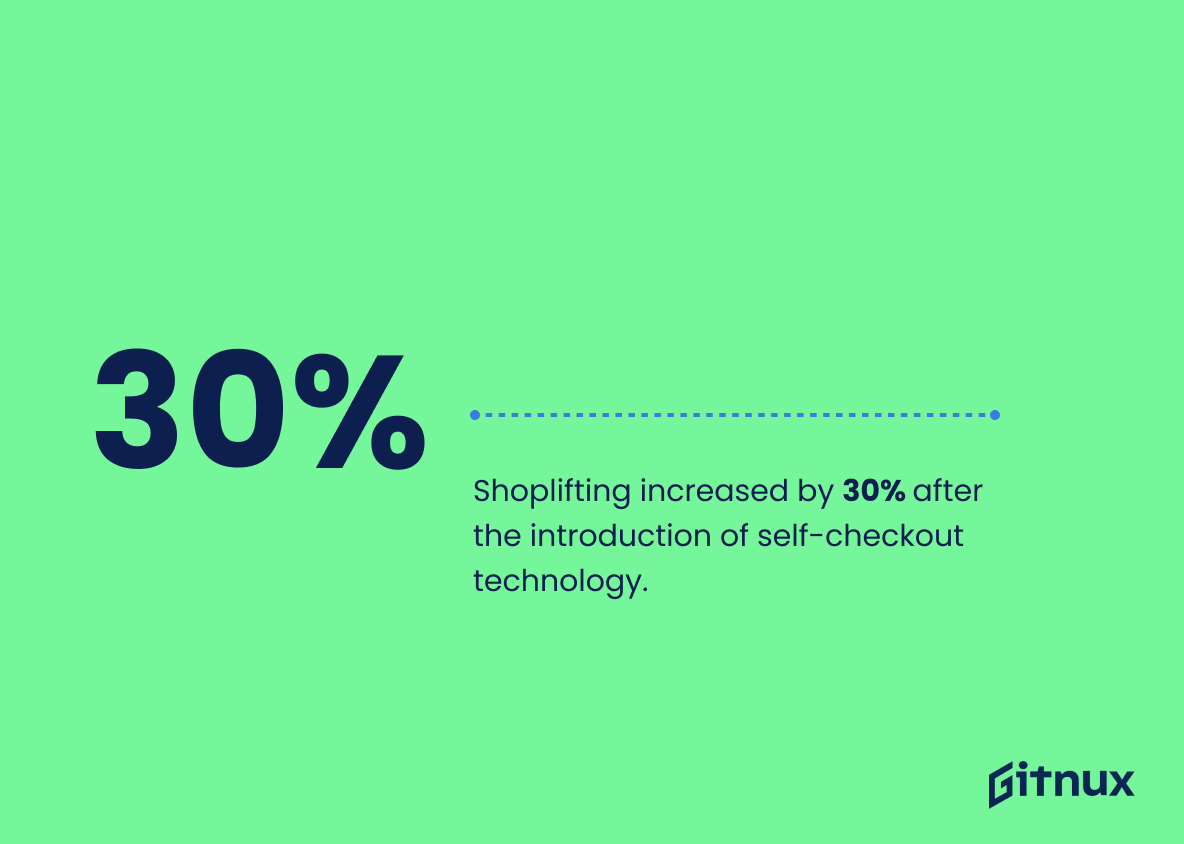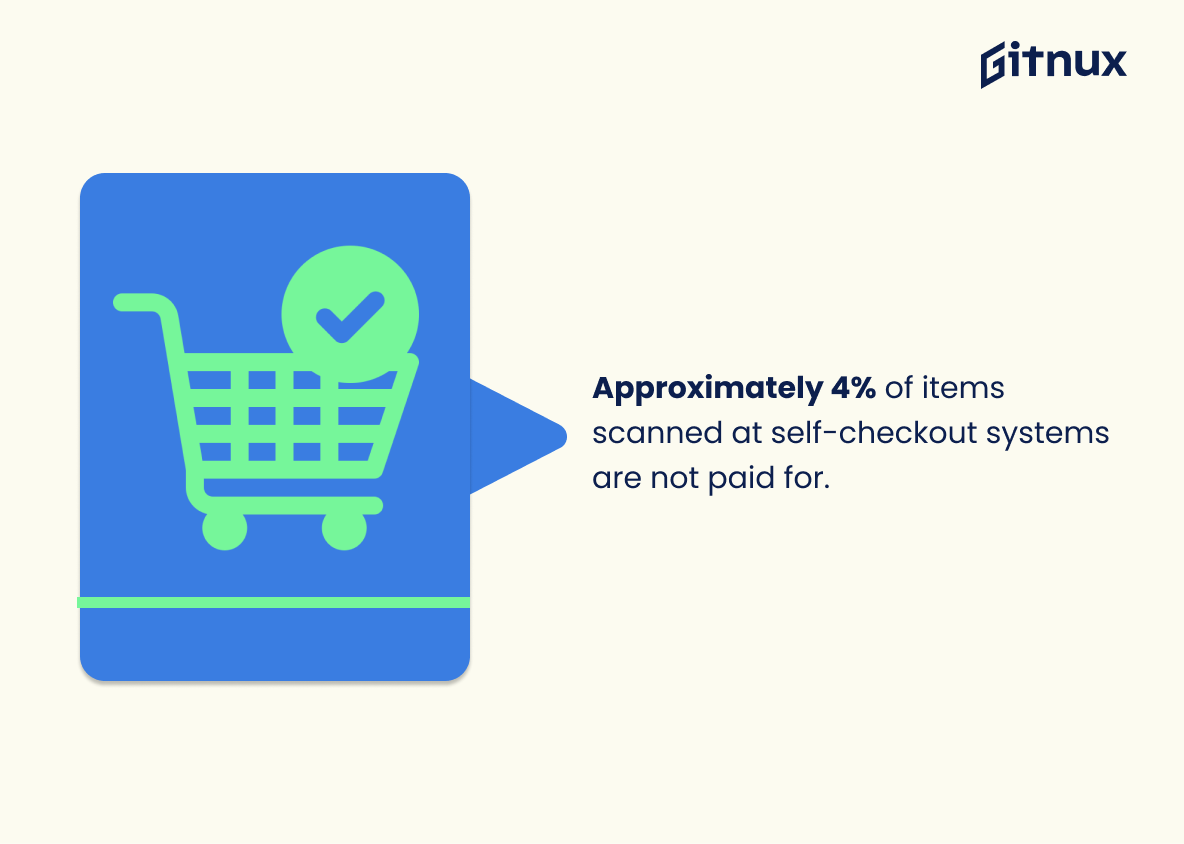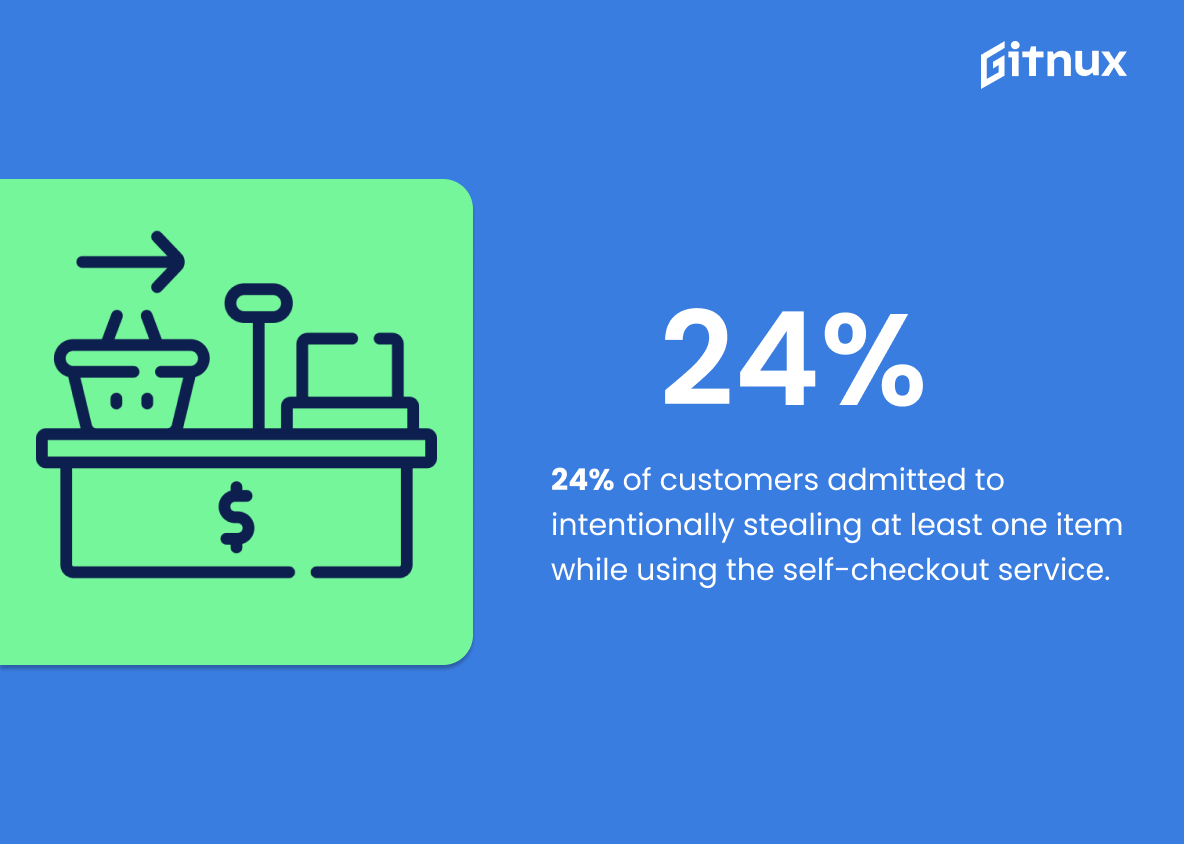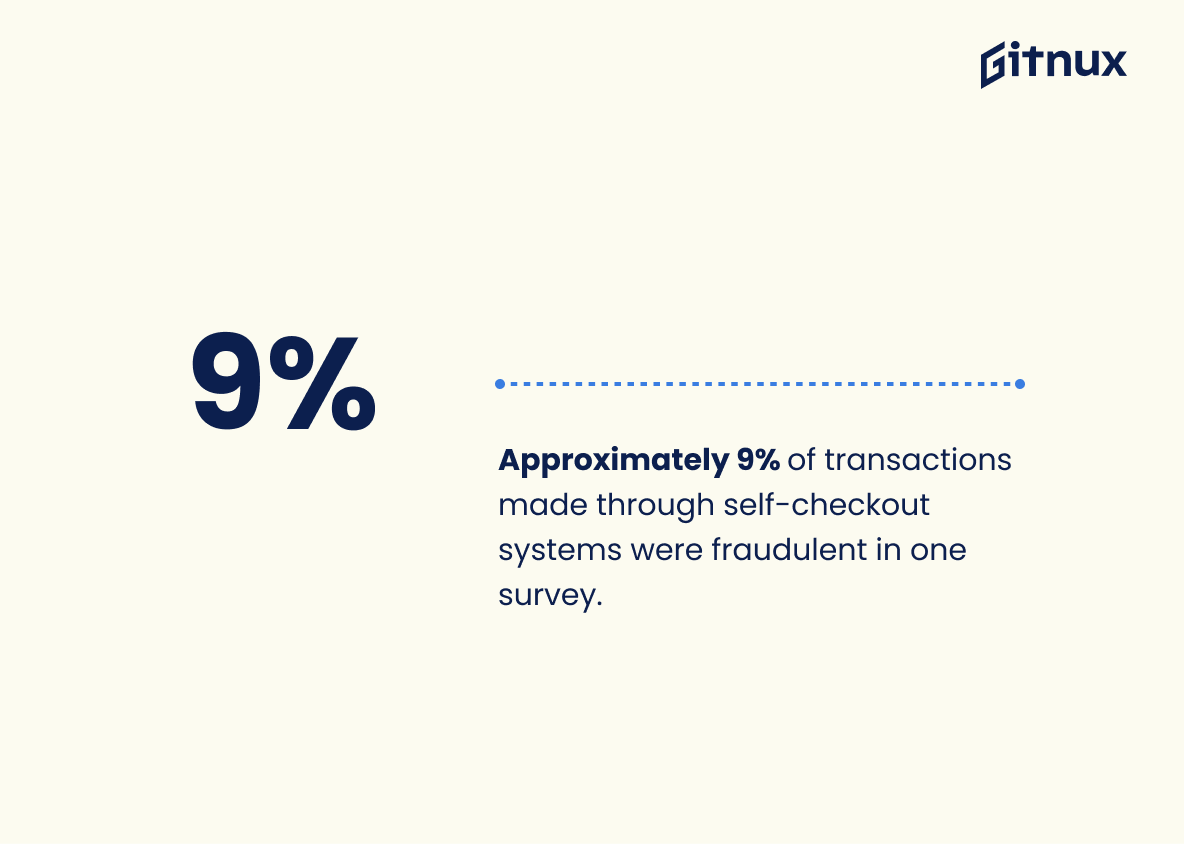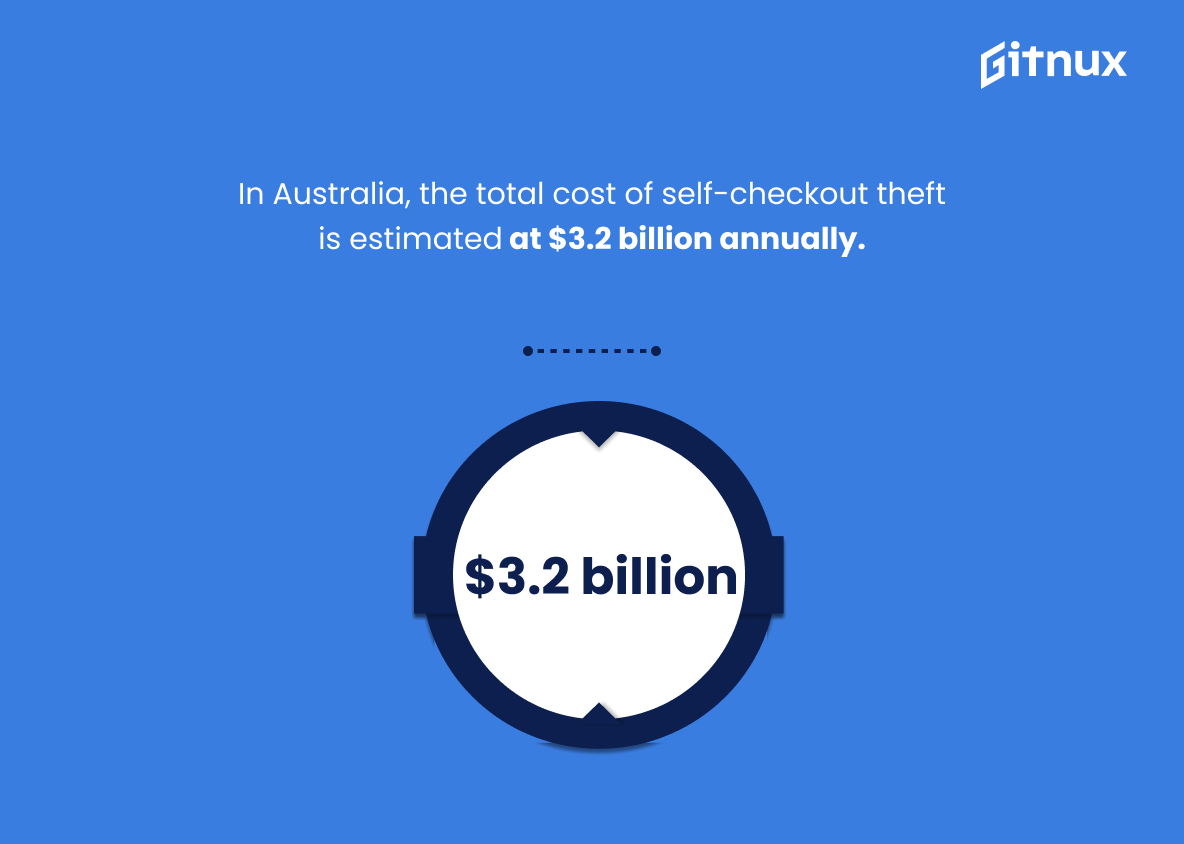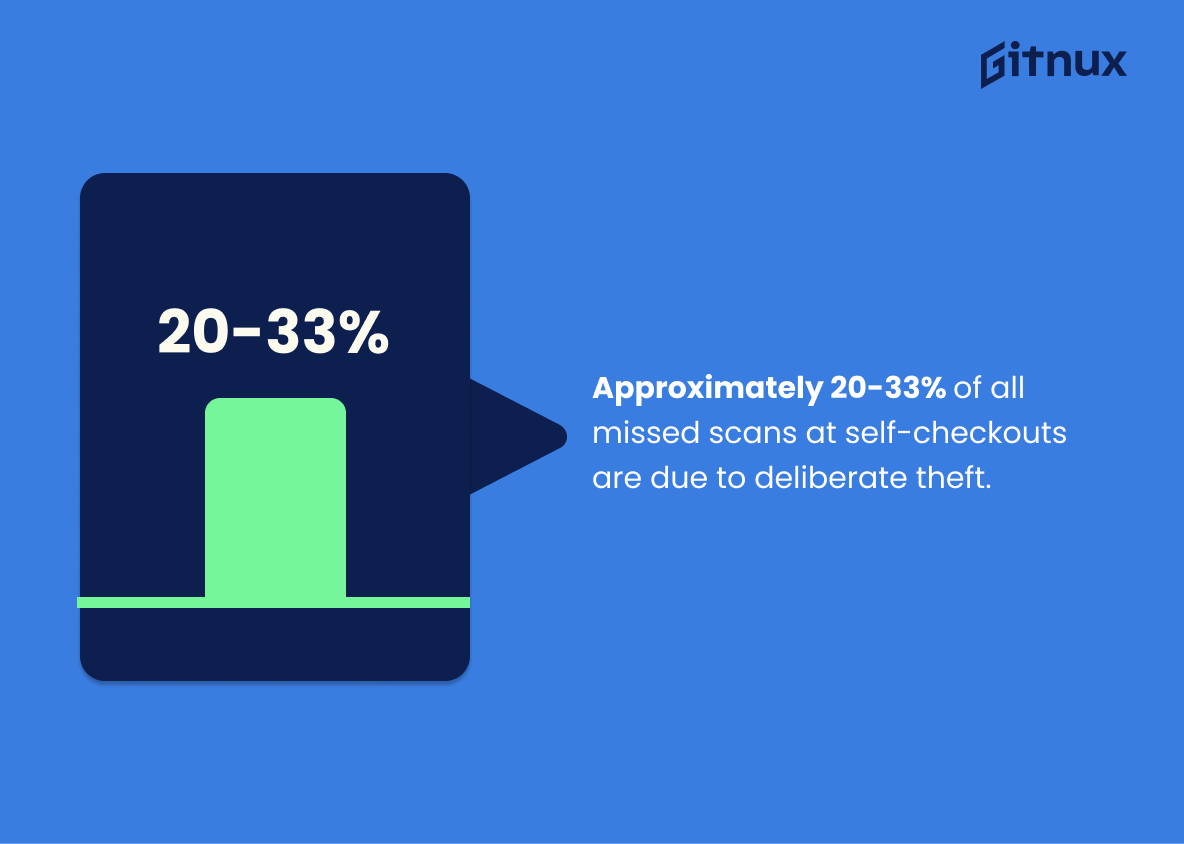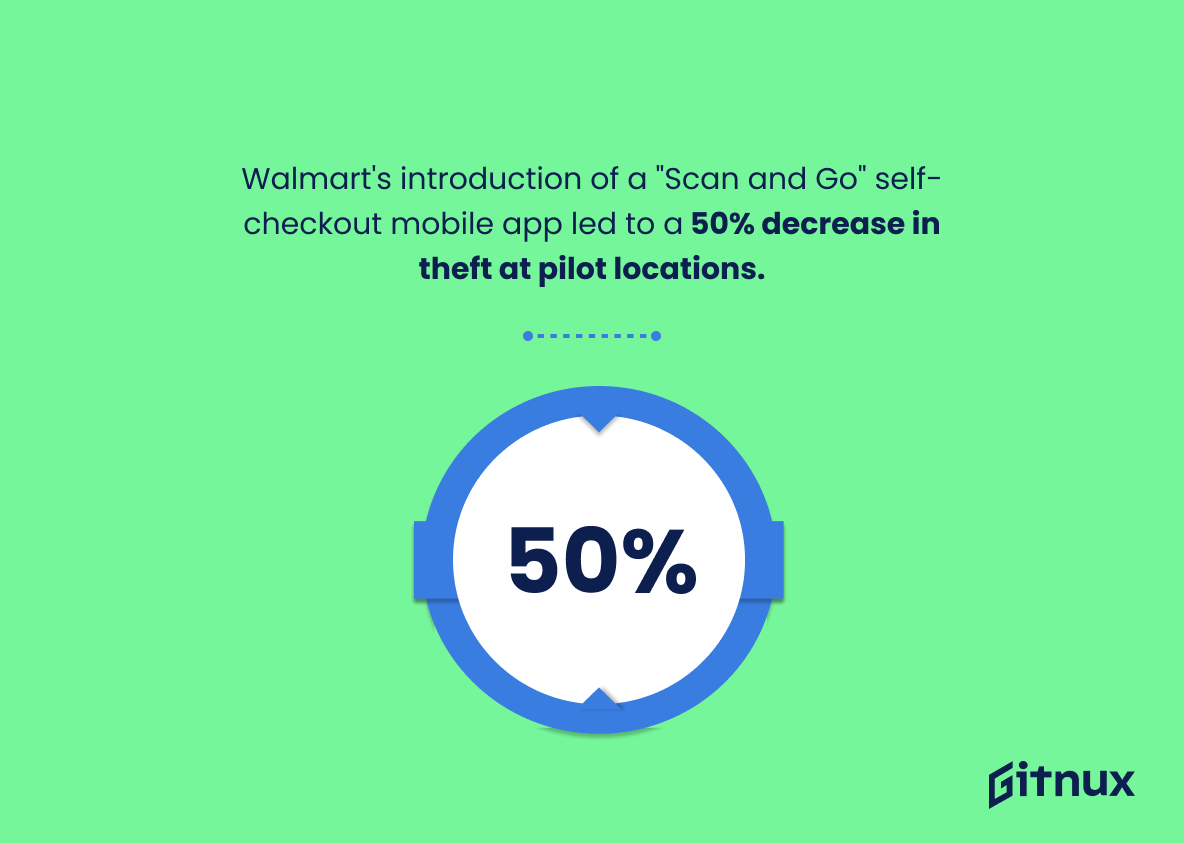The retail industry is no stranger to theft, and self-checkout systems have only exacerbated the problem. According to a report by RMI, self-checkout theft is five times more likely than traditional cashier checkout theft. Retailers experience a 50% higher rate of loss when using these systems as well. Shoplifting increased by 30% after their introduction in some areas, with approximately 4% of items scanned at self-checkouts not being paid for on average. This has cost the retail industry $1.6 billion in 2015 alone according to Business Insider estimates.
Surveys suggest that 24% of customers admitted to intentionally stealing an item while using the service and 90% aged 18–34 years prefer it over traditional checkouts; however 56%, or nearly half of American shoppers feel that this encourages shoplifting even further due to its ease of use compared with manned tills – something which employees agree upon too since 82 percent believe it’s easier for thieves than regular checkout lanes are. In Australia, total losses from such thefts amount up to $3.2 billion annually whereas France reported increases up till 30%. The UK also faces similar issues where £3 billion worth goods were stolen through these machines every year according one Telegraph article published back in 2014 . Canadian retailers surveyed revealed 40 % shoplifters used them whilst Walmart reported 10 -15 % increase post adoption leading us towards 1 .47 % inventory shrinkage per store on average due fraudsters taking advantage out 9 % transactions made via them , 42 percent admitting they didn’t understand how work & finally Scan Go mobile app pilot locations experiencing 50 decrease .
This statistic is a stark reminder of the prevalence of self-checkout theft compared to traditional cashier checkout. It highlights the need for businesses to be aware of the potential for theft when using self-checkout systems and to take the necessary steps to protect their customers and their profits.
Retailers experience a 50% higher rate of loss when using self-checkout systems.
This statistic is a stark reminder of the potential risks associated with self-checkout systems. It highlights the fact that retailers are more vulnerable to theft when using these systems, and should be aware of the heightened risk of loss.
Self Checkout Theft Statistics Overview
Shoplifting increased by 30% after the introduction of self-checkout technology.
This statistic is a powerful indicator of the impact that self-checkout technology has had on shoplifting. It demonstrates that the introduction of self-checkout technology has had a significant effect on the rate of shoplifting, and serves as a warning to retailers that they must take steps to prevent theft in their stores. This statistic is an important piece of evidence in any discussion of self-checkout theft statistics, and should be taken into consideration when making decisions about the use of self-checkout technology.
Approximately 4% of items scanned at self-checkout systems are not paid for.
This statistic is a stark reminder of the prevalence of self-checkout theft. It highlights the fact that a significant portion of items scanned at self-checkout systems are not being paid for, indicating that theft is a major issue that needs to be addressed.
Self-checkout theft cost the retail industry $1.6 billion in 2015.
This statistic is a stark reminder of the immense financial burden that self-checkout theft has placed on the retail industry. With a staggering $1.6 billion in losses, it is clear that this is an issue that needs to be addressed.
24% of customers admitted to intentionally stealing at least one item while using the self-checkout service.
This statistic is a stark reminder of the prevalence of self-checkout theft, and serves as a warning to businesses that utilize this service. It highlights the importance of taking measures to prevent such theft, as it can have a significant impact on their bottom line.
90% of customers aged 18 to 34 years have used self-checkout, and 60% prefer it.
This statistic is a telling indication of the popularity of self-checkout among the 18 to 34 age group. It shows that a vast majority of this demographic have used self-checkout, and a majority of them prefer it. This is important to consider when discussing self-checkout theft statistics, as it provides insight into the motivations of those who may be more likely to commit such crimes.
Approximately 9% of transactions made through self-checkout systems were fraudulent in one survey.
This statistic is a telling indication of the prevalence of self-checkout theft. It highlights the need for businesses to be aware of the potential for fraudulent activity when using self-checkout systems, and to take steps to protect themselves from it.
82% of employees believe that self-checkout theft is easier to commit than traditional checkout theft.
This statistic is a telling indication of the prevalence of self-checkout theft. It suggests that the majority of employees are aware of the ease with which self-checkout theft can be committed, and that it is seen as a more attractive option than traditional checkout theft. This is an important statistic to consider when discussing the issue of self-checkout theft, as it provides insight into the mindset of those who are most likely to commit the crime.
In Australia, the total cost of self-checkout theft is estimated at $3.2 billion annually.
This statistic is a stark reminder of the immense financial burden that self-checkout theft places on the Australian economy. With an estimated cost of $3.2 billion annually, it is clear that this is an issue that needs to be addressed. It is a call to action for businesses, governments, and consumers alike to take steps to reduce the prevalence of self-checkout theft and its associated costs.
In the UK, self-checkout theft accounts for nearly £3 billion in losses each year.
This statistic is a stark reminder of the immense financial burden that self-checkout theft places on businesses in the UK. It serves as a powerful illustration of the scale of the problem, and the need for businesses to take steps to protect themselves from losses due to theft.
Nearly 40% of shoplifting occurs at self-checkout machines according to a survey of Canadian retailers.
This statistic is a stark reminder of the prevalence of shoplifting at self-checkout machines, and serves as a call to action for retailers to take steps to prevent theft at these locations. It highlights the need for retailers to be aware of the potential for shoplifting at self-checkout machines and to take steps to reduce the risk of theft. This statistic is an important part of the conversation about self-checkout theft and provides valuable insight into the scope of the problem.
One study found that self-checkout systems accounted for 39% of retail inventory shrinkage.
This statistic is a powerful indicator of the prevalence of self-checkout theft. It shows that a significant portion of retail inventory shrinkage can be attributed to customers taking advantage of self-checkout systems. This highlights the importance of taking measures to prevent theft at self-checkout stations in order to protect businesses from losses.
Approximately 20-33% of all missed scans at self-checkouts are due to deliberate theft.
This statistic is a stark reminder of the prevalence of self-checkout theft. It highlights the need for businesses to take proactive steps to protect their profits and ensure that customers are not taking advantage of the system. It also serves as a warning to customers that they should be aware of the potential for theft when using self-checkouts.
Walmart’s introduction of a “Scan and Go” self-checkout mobile app led to a 50% decrease in theft at pilot locations.
This statistic is a powerful testament to the effectiveness of Walmart’s “Scan and Go” self-checkout mobile app in reducing theft at pilot locations. It demonstrates that the app is an effective tool for deterring shoplifters and can be a valuable asset for businesses looking to reduce theft in their stores.
In a survey of 2,200 customers, 42% admitted to stealing an item accidentally because they didn’t understand how to work the self-checkout.
This statistic serves as a stark reminder of the importance of having a clear and concise self-checkout system. It highlights the fact that if customers don’t understand how to use the self-checkout, they may be more likely to accidentally steal an item. This is an issue that needs to be addressed in order to reduce the amount of self-checkout theft.
Conclusion
The statistics presented in this blog post demonstrate that self-checkout theft is a major issue for retailers. Self-checkout systems are five times more likely to be targeted by shoplifters than traditional cashier checkout, and the rate of loss experienced by retailers using these systems is 50% higher. Shoplifting has increased significantly since the introduction of self-checkouts, with an estimated 4% of items scanned not being paid for and $1.6 billion lost due to theft in 2015 alone. Furthermore, 24% of customers admitted to intentionally stealing at least one item while using the service, and 82% believe it’s easier to commit theft through self-checkouts compared to traditional checkouts.
In addition, 90% of customers aged 18–34 years have used or prefer self-checkout services; however 56%, as well as 42%, admit they don’t understand how they work which can lead them into accidentally committing thefts without realizing it – resulting in inventory shrinkage rates averaging 1.47%. Fraudulent transactions made via these machines account for 9%, whilst Australian retail stores lose up to $3.2 billion annually from such thefts; France also reported a 30 percent increase over some supermarkets’ usage figures too. Walmart’s “Scan & Go” mobile app led pilot locations experiencing a 50 percent decrease in losses but overall shoplifting still accounts for 40 percent when utilizing such technology – costing UK businesses £3bn each year.
Overall then there appears no doubt that despite its convenience factor (and cost savings) associated with implementing automated checkout solutions within retail outlets comes significant risks related directly towards potential financial losses caused by customer/shopper dishonesty – something all store owners should take seriously if considering introducing similar technologies into their own operations going forward.
References
0. – https://www.businessinsider.com
1. – https://www.ncr.com
2. – https://www.cutimes.com
3. – https://www.consumeraffairs.com
4. – https://www.telegraph.co.uk
5. – https://www.commercialintegrator.com
6. – https://www.usatoday.com
7. – https://www.canadiansecuritymag.com
8. – https://www.retaildive.com
9. – https://www.pcworld.idg.com.au
10. – https://www.securitymagazine.com
11. – https://www.news.com.au
12. – https://www.losspreventionmedia.com
13. – https://www.mytotalretail.com
14. – https://www.edition.cnn.com
15. – https://www.risnews.com

